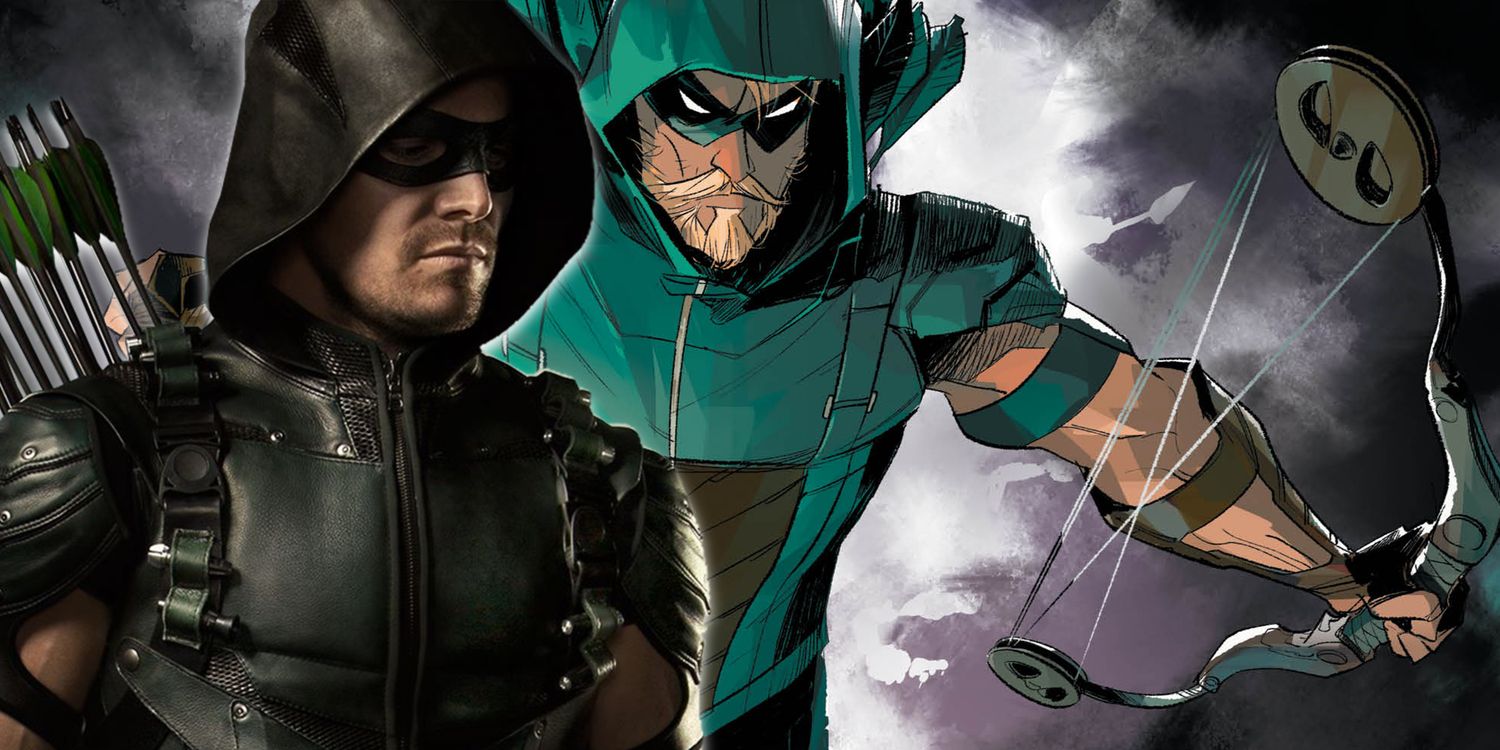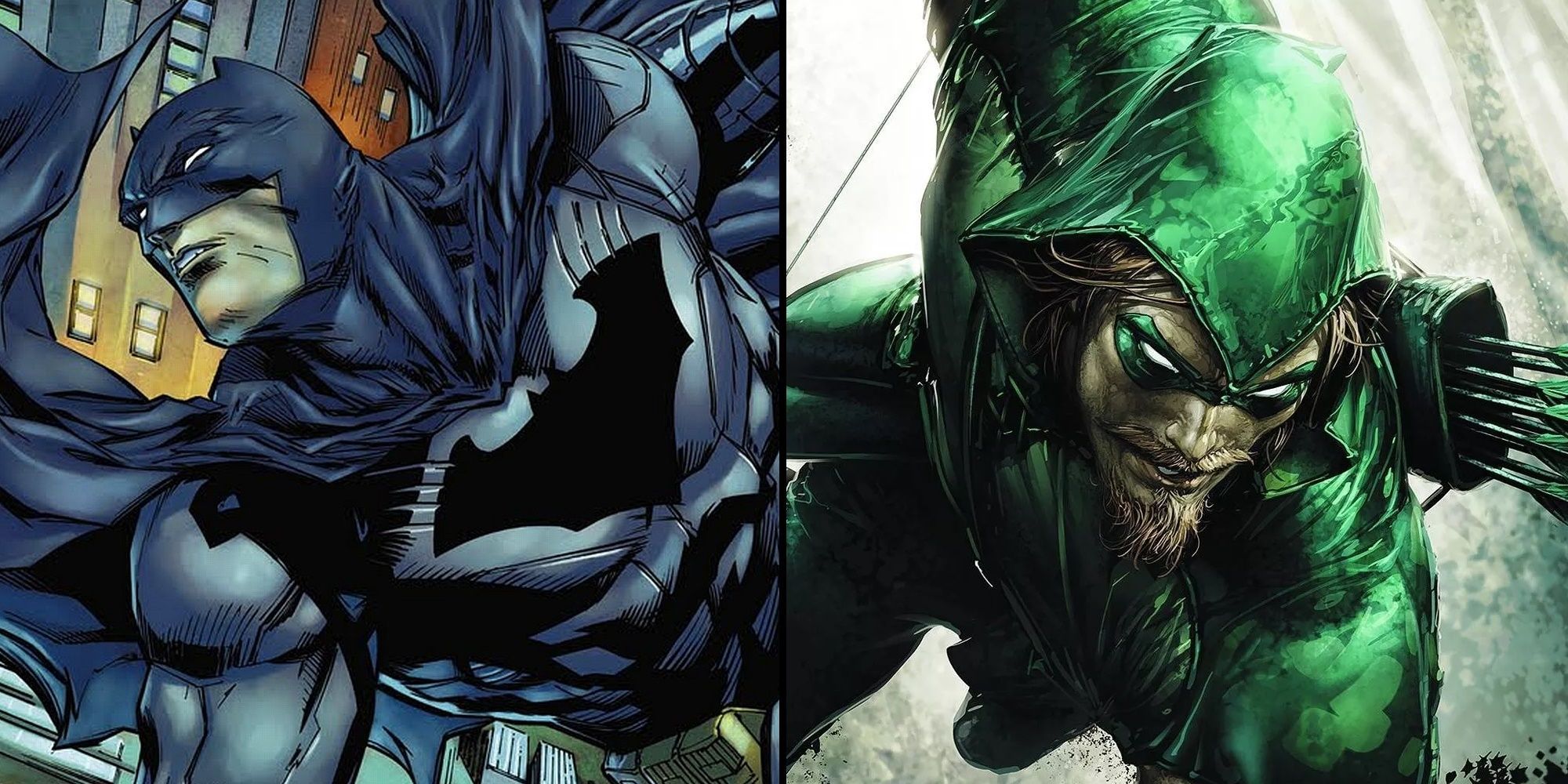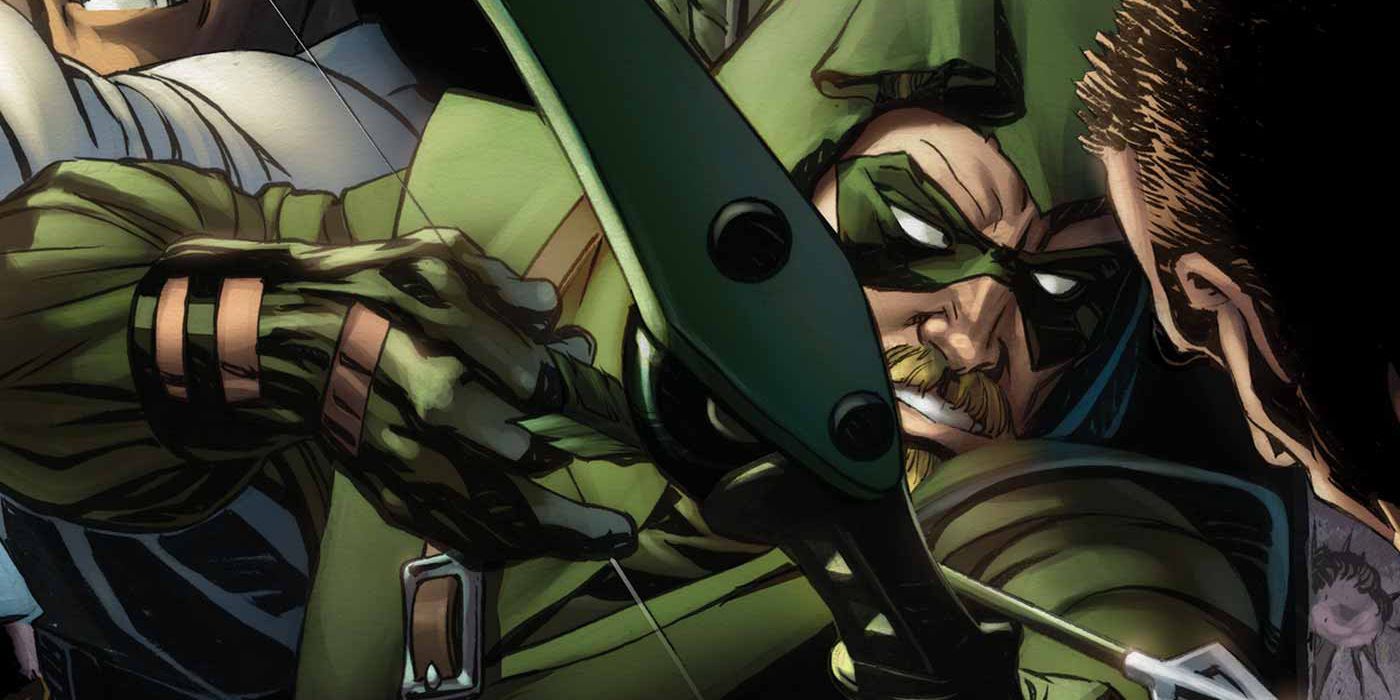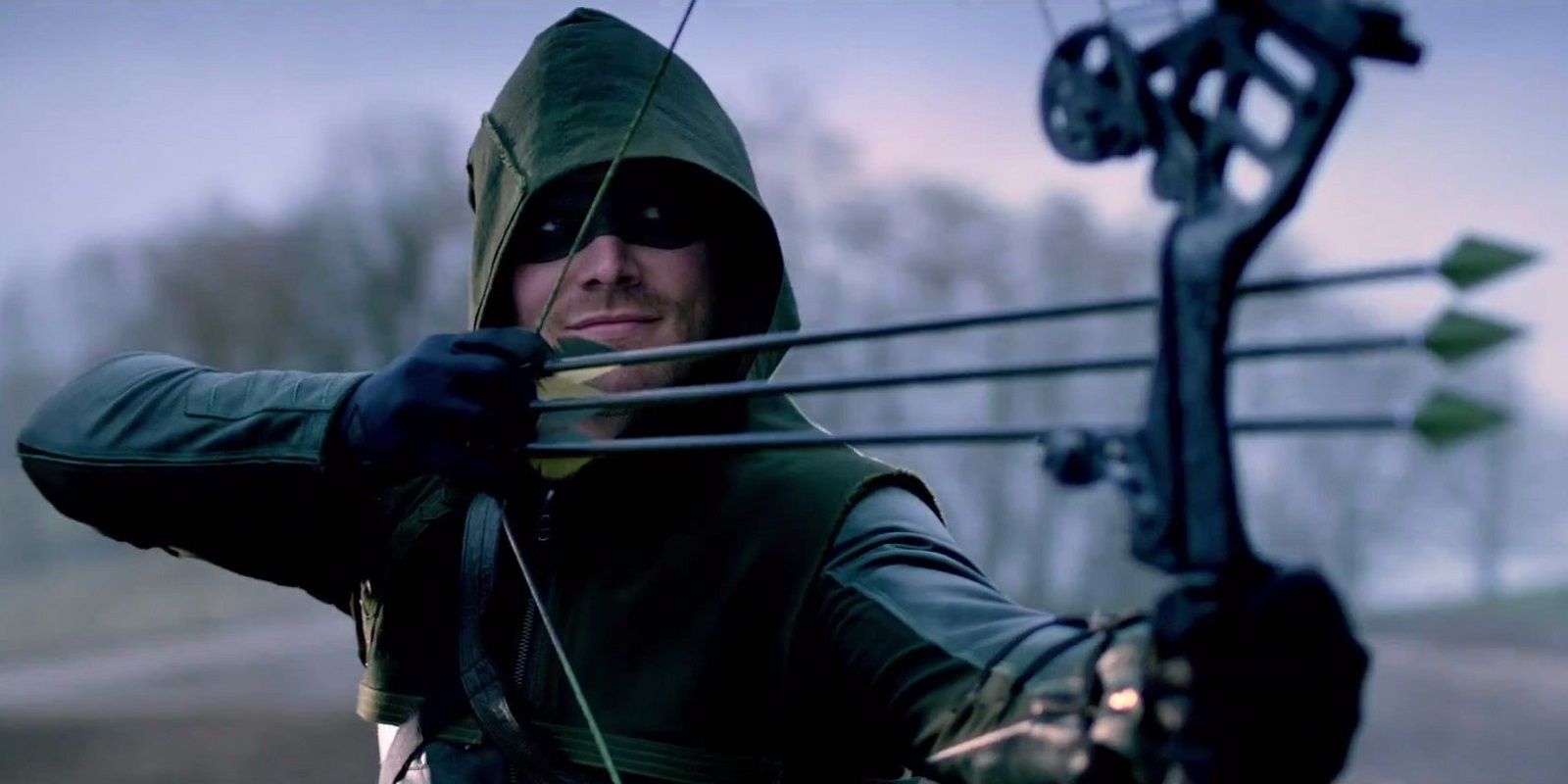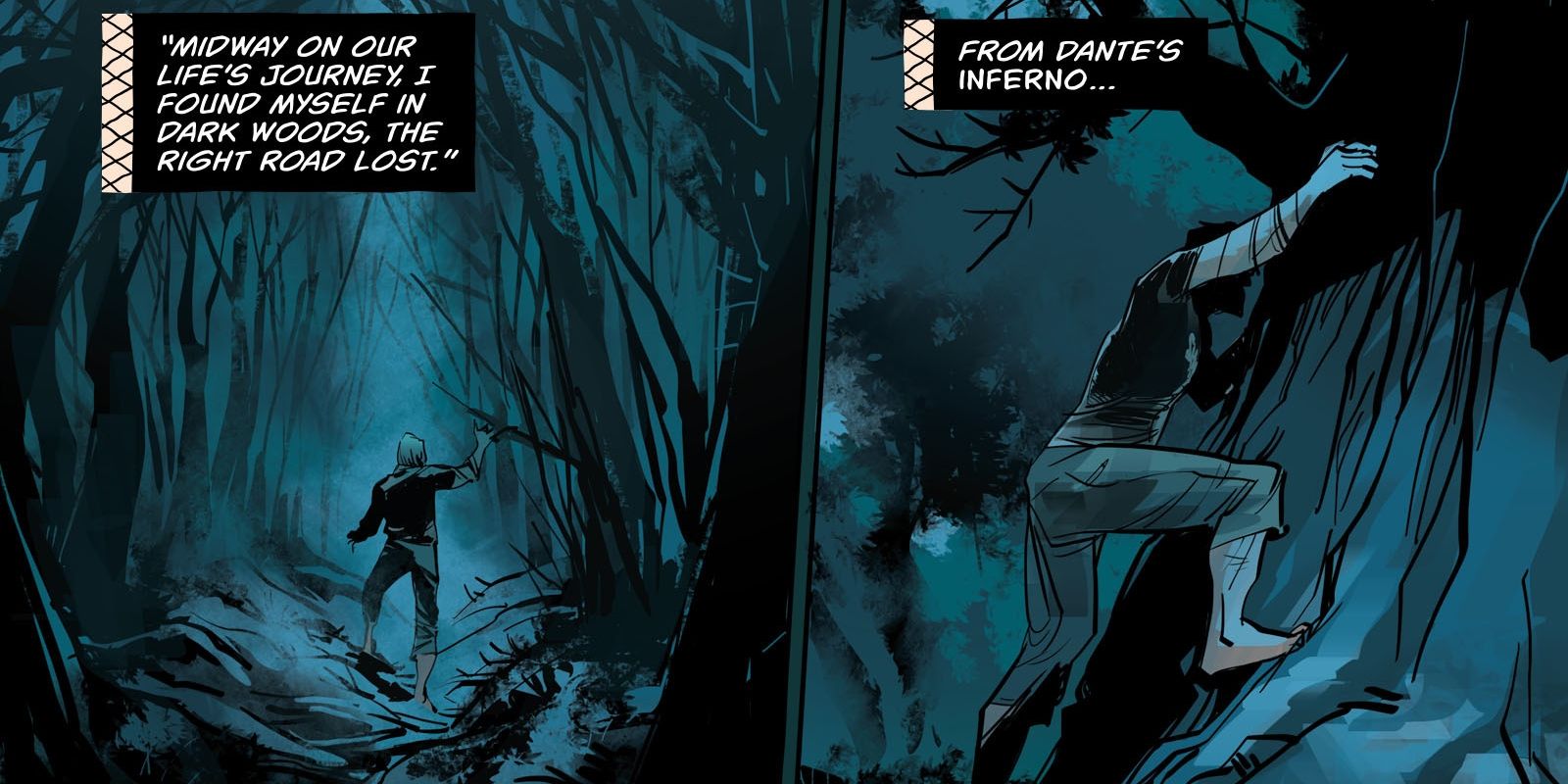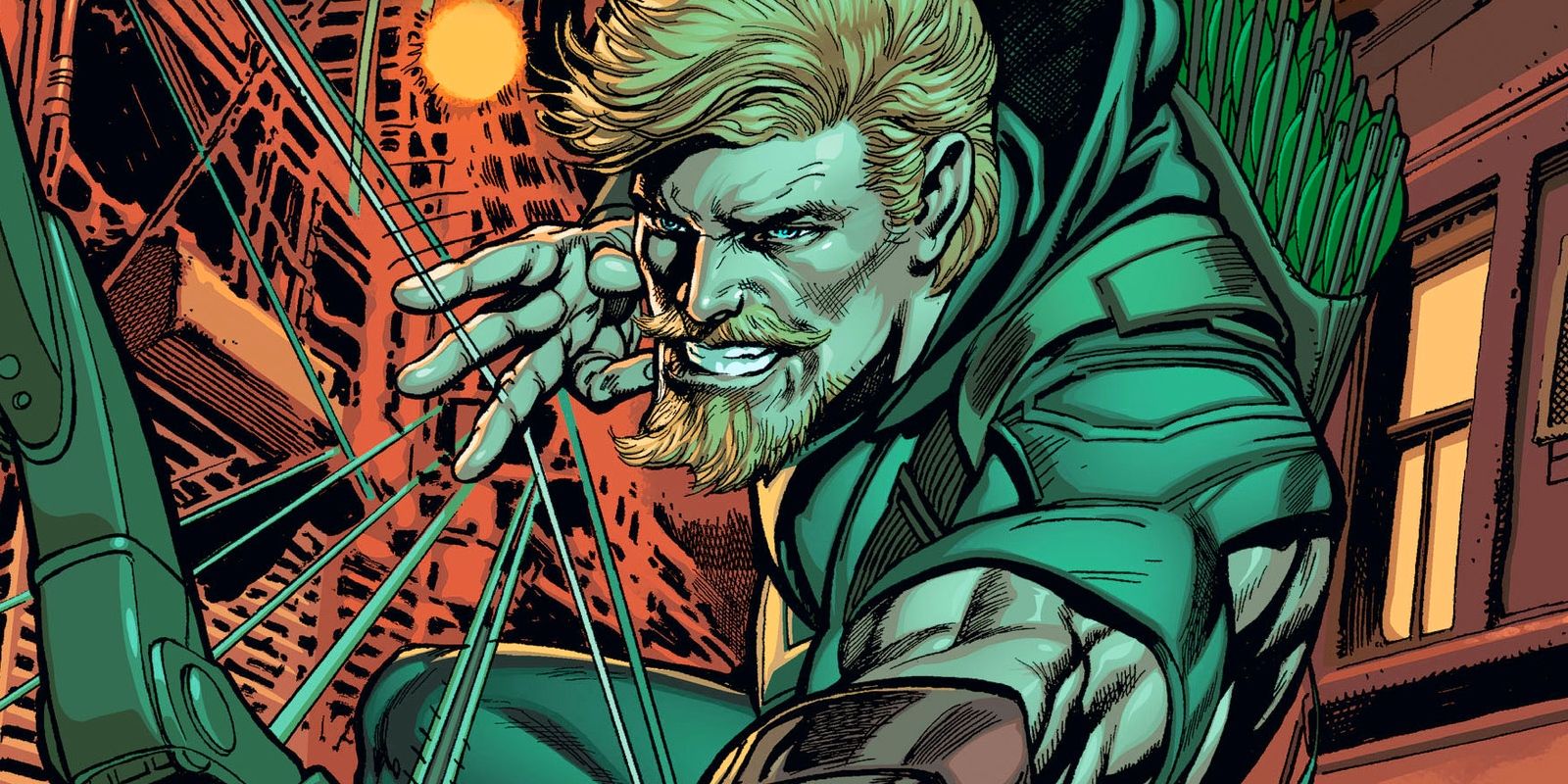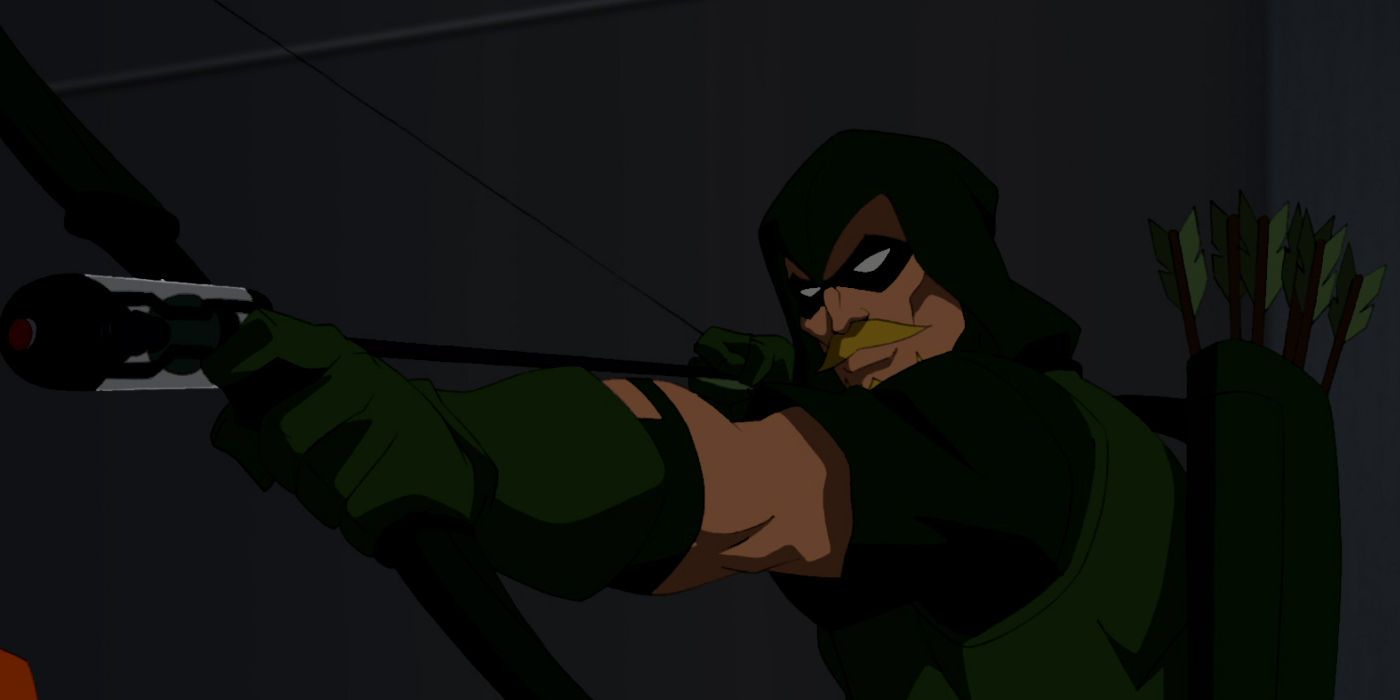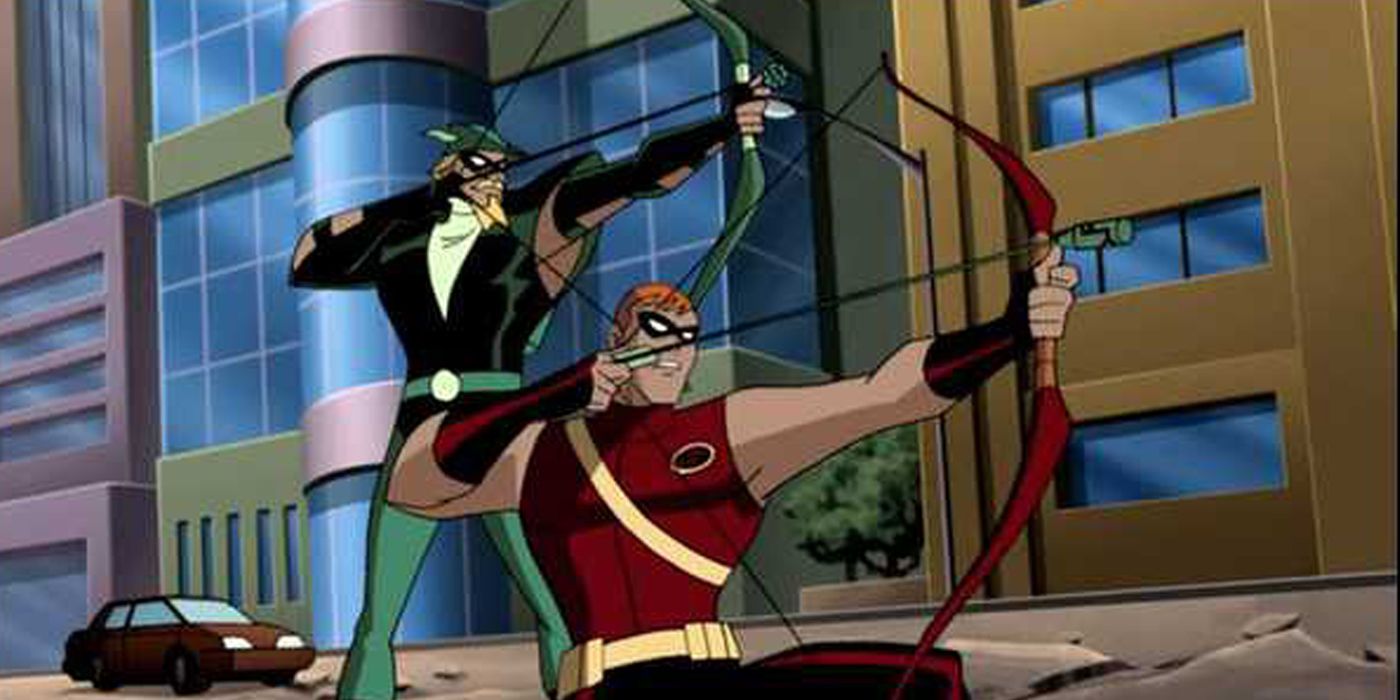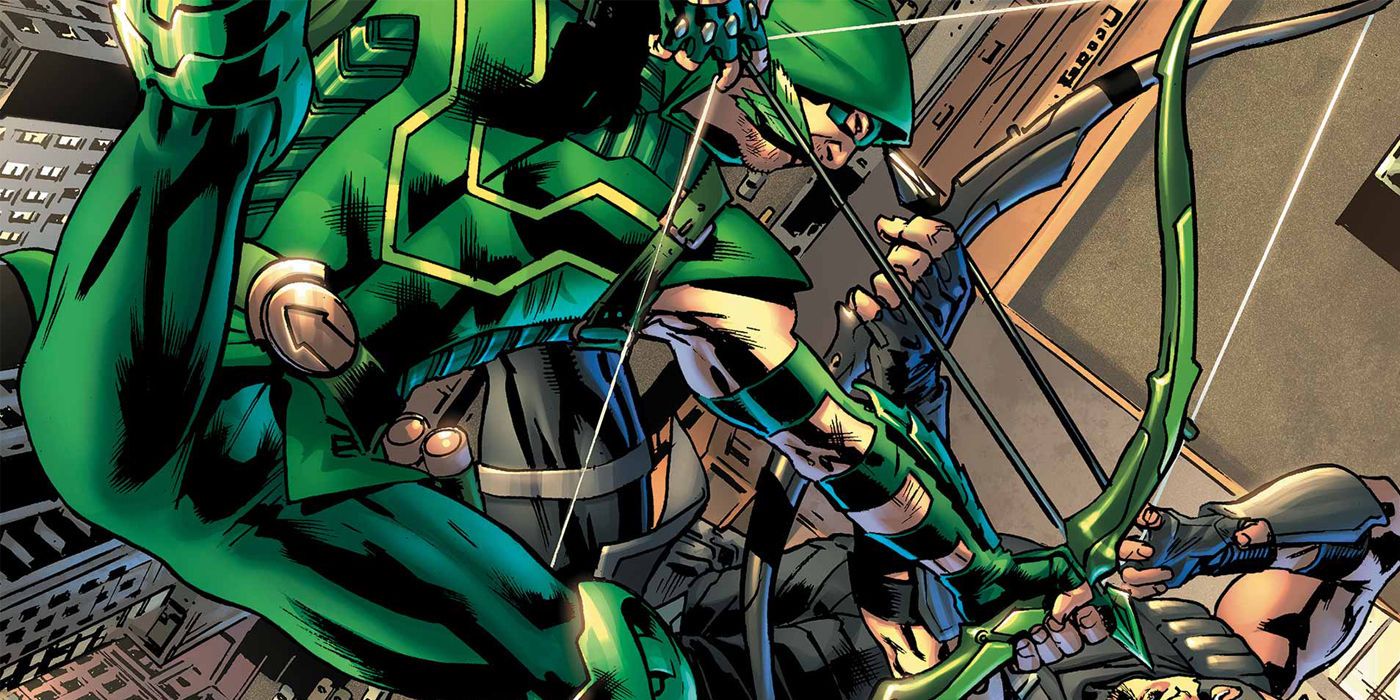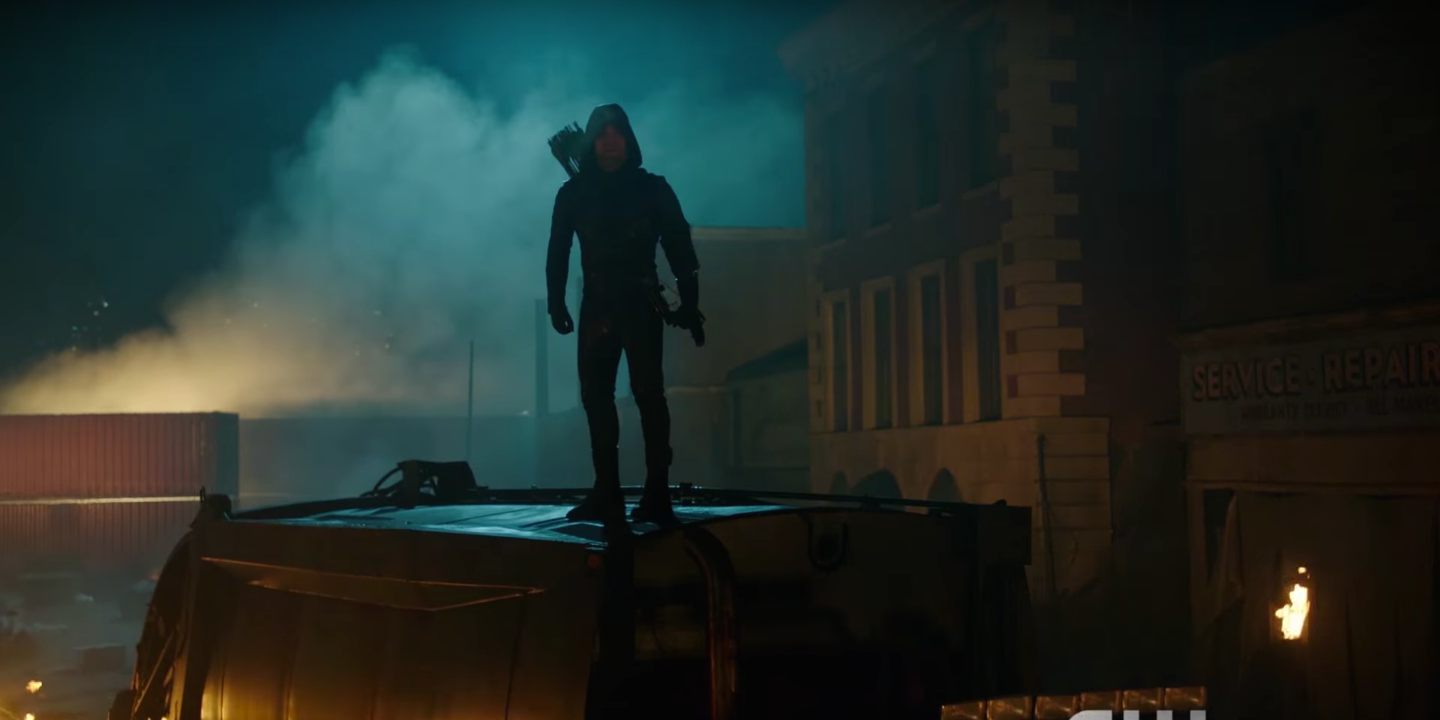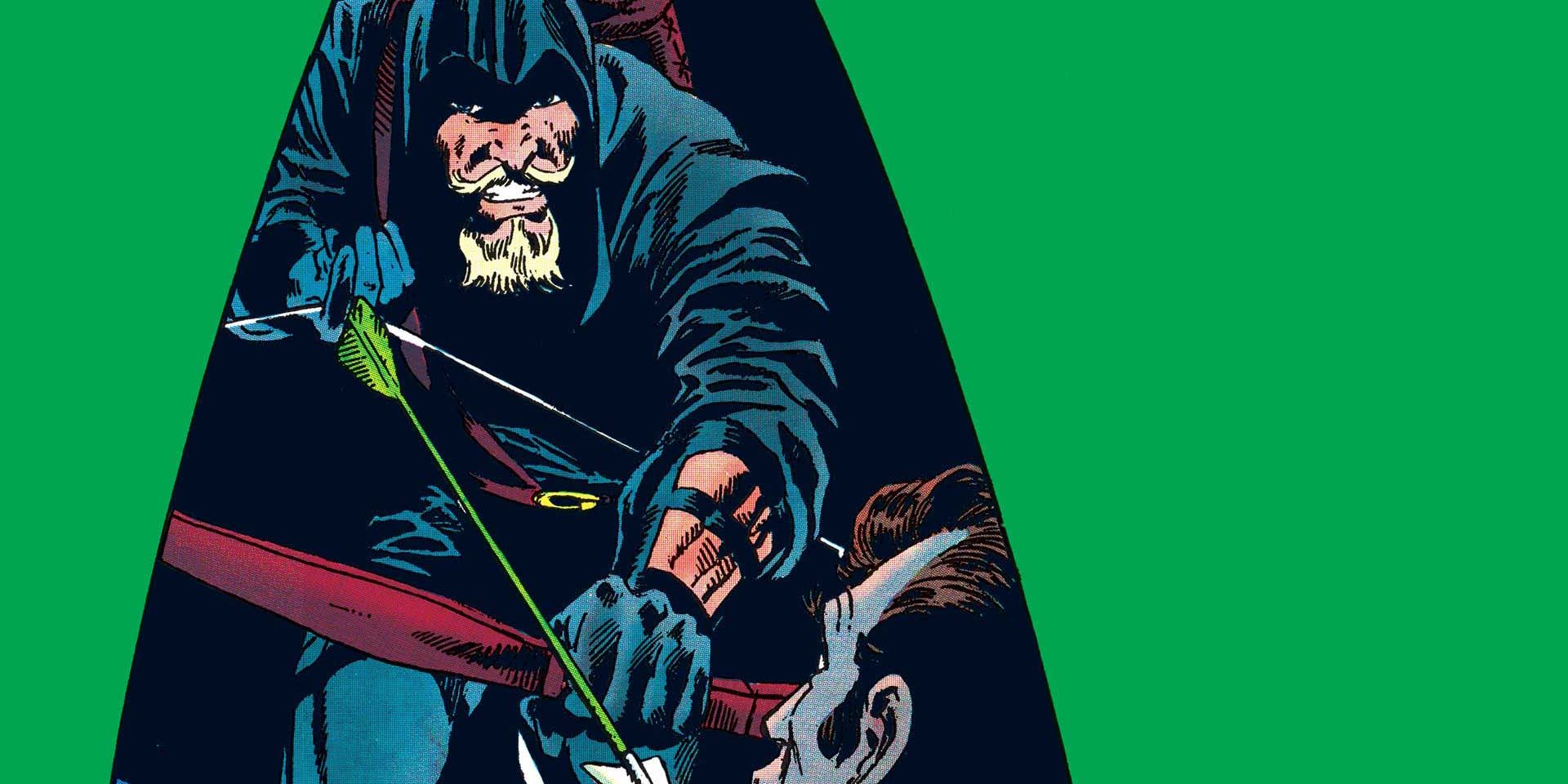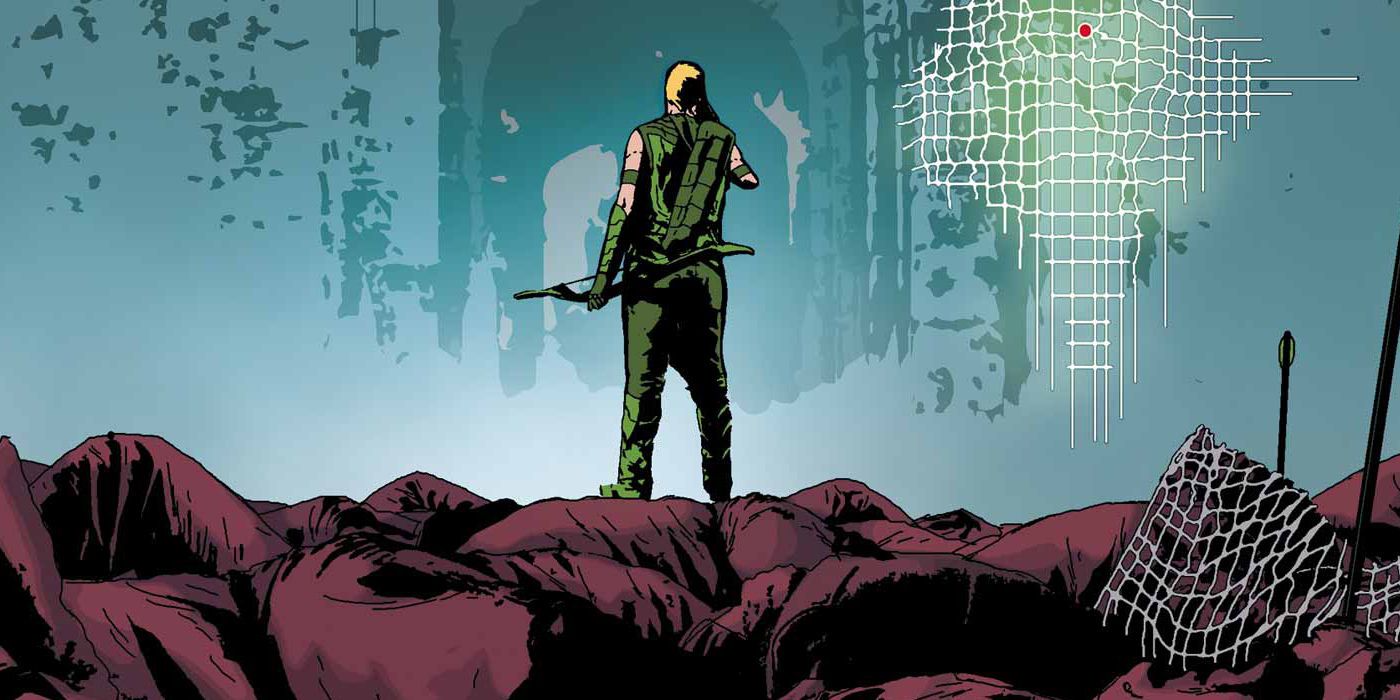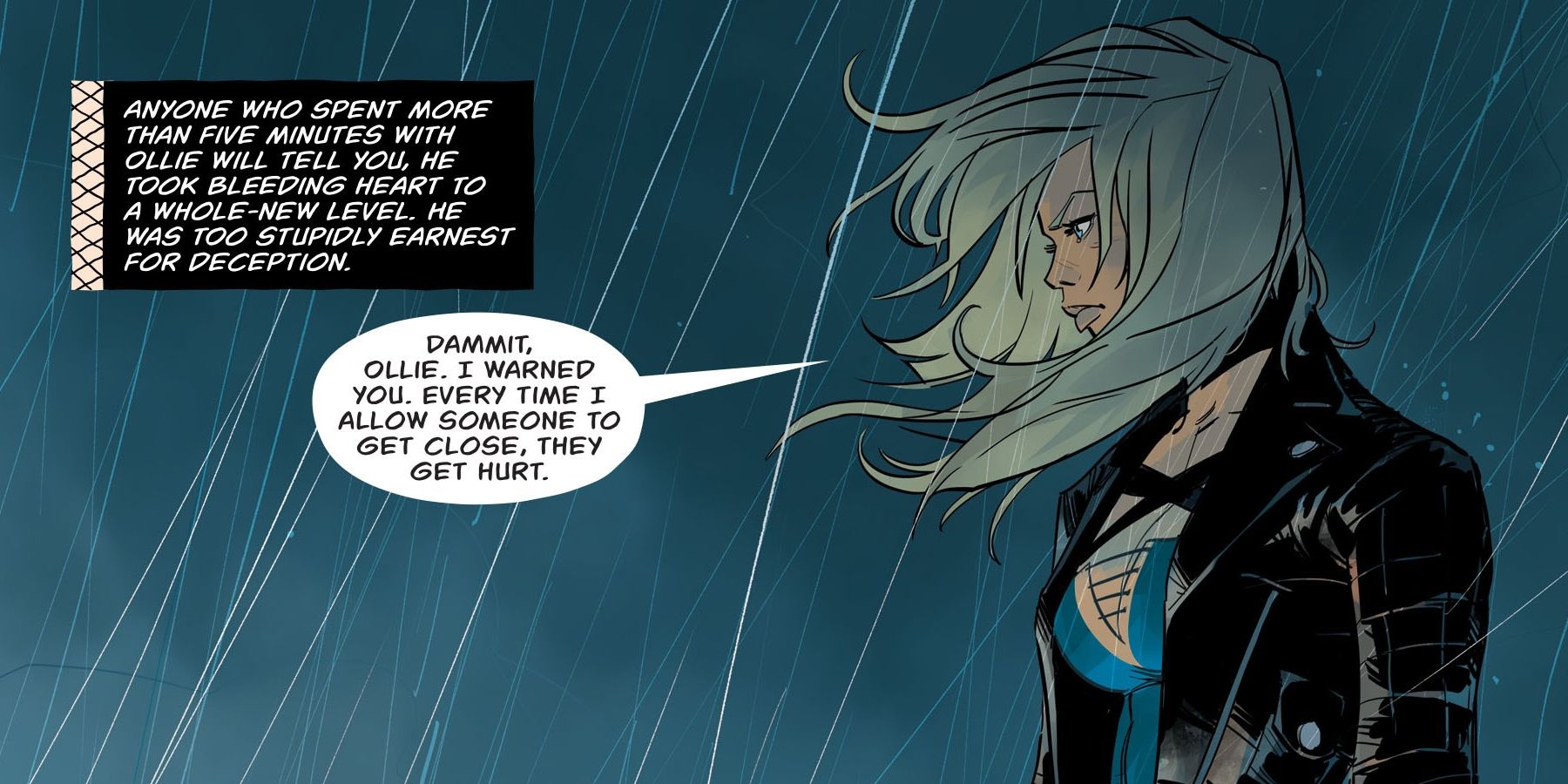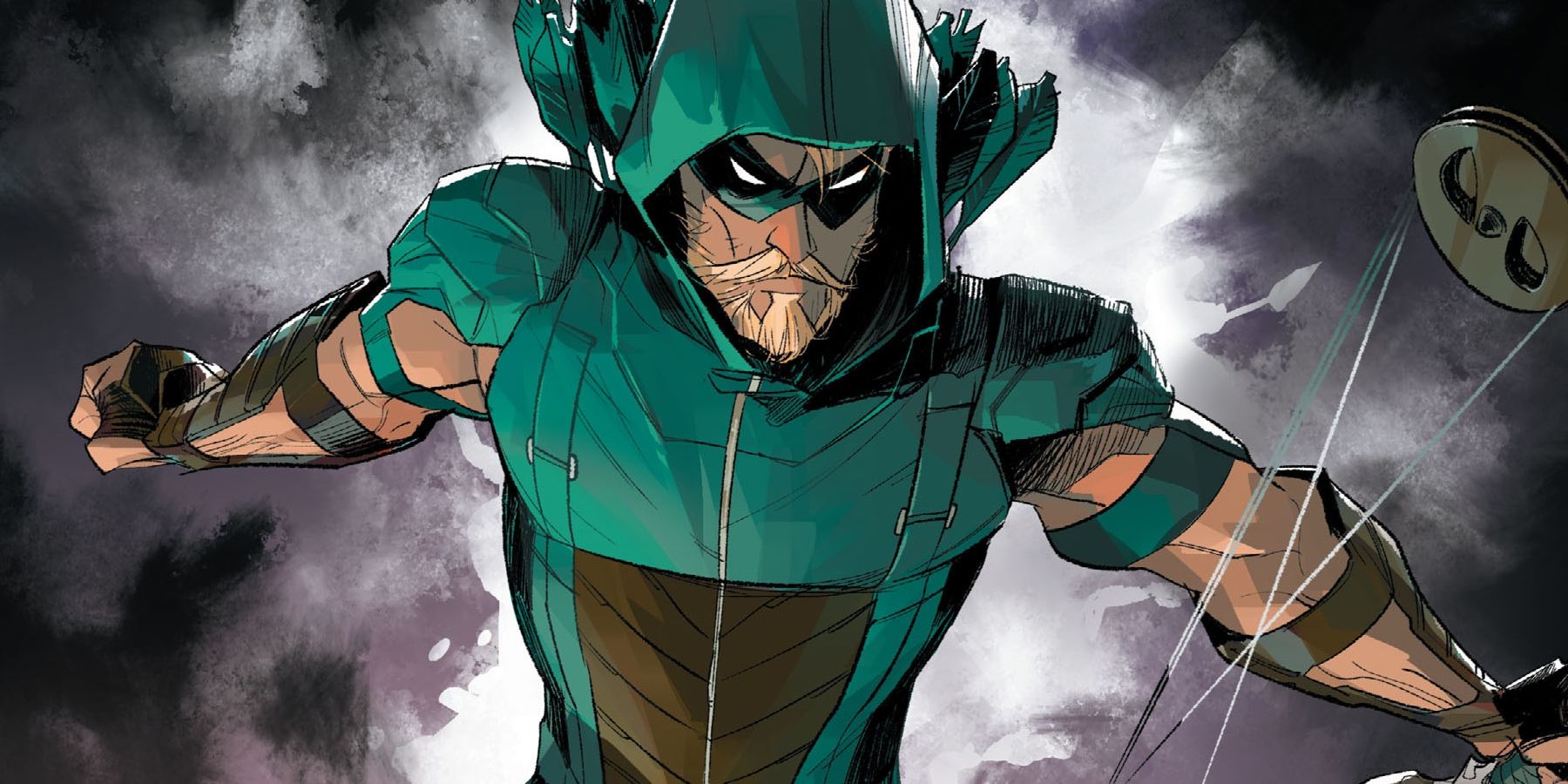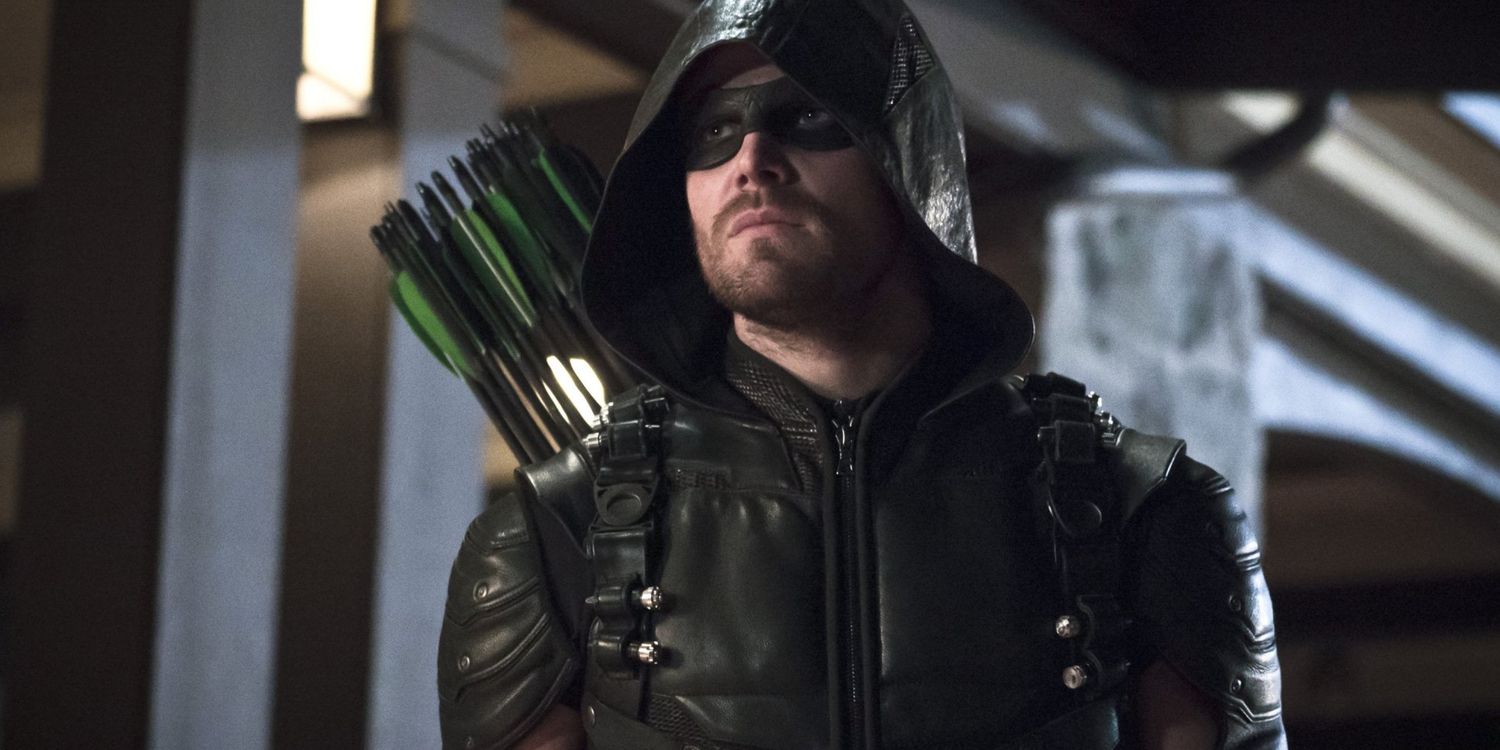In a world of alien gods, space cops with magic rings and men who can outrace light itself, there's something impressive about a guy who can hold his own with just a bow and arrow. No, we're not talking about Hawkeye, but rather DC's own Emerald Archer, Green Arrow.
First appearing in 1941, Green Arrow has been a mainstay of the DC universe ever since. Green Arrow has never managed to become as famous as some of his allies on the Justice League, but thanks to the success of the CW's Arrow, he's never been more popular. So sit back and enjoy our history of DC's greatest archer. Let's celebrate Oliver Queen by taking a look at The Complete History Of Green Arrow.
15. Concept
First appearing in More Fun Comics #73, in 1941, the Emerald Archer’s origins aren’t all that inspired. With his green outfit, iconic beard and skill with a bow, Ollie clearly drew inspiration from Robin Hood. That’s cool with us; if you’re going to create an archer-based hero, then Robin Hood is as good a place to start as any. The whole “steal from the rich, give to the poor” thing wasn’t initially a part of his character. But later one he would become an advocate for liberal politics and social justice so Robin Hood’s status as a champion of the poor eventually made it into Green Arrow’s character.
It’s often said that Green Arrow started off as nothing more than an arrow-themed version of Batman, but the character's creator, Mort Weisinger, denied that claim saying “I wasn’t remotely influenced by Batman. My Green Arrow was a streamlined Robin Hood – a law-abiding Robin Hood. Then I added props – the Arrowmobile, for one, and I got into the business of creating new kinds of arrows.” He did admit to being inspired by the film The Green Archer.
The final bits of inspiration for Green Arrow came from the old west, specifically stories about cowboys and Indians. The character's original origin story has ties to Native Americans and Mort Weisinger, who created the character, also created a cowboy themed character known as the Vigilante .
14. First Appearance
Green Arrow made his first appearance in the pages of More Fun Comics #73. The story introduced both Oliver Queen and his sidekick Roy Harper, better known as Speedy. Despite being the first appearance of such an iconic character, this story isn’t very good and it makes one really odd error. In nearly every incarnation of the character, Oliver Queen has blonde hair, but in this he has brown hair. Of course, it could be that every subsequent issue is making an error.
The actual plot of this issue is rather nonsensical. It features Green Arrow and Speedy trying to solve the murder of at the History Club. No, the club isn’t a group of history buffs, but rather simply a group of people who have the last names of famous historical figures such as Lincoln or Socrates. Honestly, we’re not sure what the purpose of this club is aside from dying in absurd ways; Leonard Achilles, for example, was tricked into wearing metal boots and getting electrocuted.
Sadly, this issue does mark the beginning of one of Green Arrow’s time-honored traditions: the villains suck. He’s just some crook in a cowboy hat killing of members of the Club so he can embezzle money.
13. Secret Origins - Lost Mesa
Some superhero origins are so iconic that no one would consider changing them. Bruce Wayne saw his parents murdered and vowed to fight crime as Batman. Peter Parker was bitten by a radioactive spider and took up the mantle of Spider-Man. Green Arrow’s origin doesn’t fall into that category. He has had a couple of different origins throughout the years.
His first origin appears in the pages of More Fun Comics 89 and ties into the Native American theme we mentioned earlier. This issue serves as an origin for both Green Arrow and Speedy. Roy tells the story of how his father’s plane crashed leaving Roy stranded with Old Quoag, his father’s “Indian servant.” Yeah, we’re not surprised this bit of Roy’s story never made it into Arrow. Roy and Quoag were stranded on top of a mesa until Oliver, who was looking for Native American artifacts, found them. After fending off a group of thieves who were also after the artifacts, Oliver and Roy find a city made of gold. Oliver then promptly uses said gold to make himself rich. Have we mentioned he’s the hero of this story?
12. Secret Origins - The Island
The more famous and, in our opinion, superior origin was first created by Jack Kirby in Adventure Comics #250. This origin, which would become the basis for much of Arrow, has actually been revised several times over the years, but the basics remain the same. Oliver Queen is shipwrecked on an island and has to rely on his skills with a bow to survive. There’s is usually some criminal element on the island either pirates as in the original tale or the drug runners in Green Arrow: Year One.
One of the benefits to this origin over the original is that it provides a crucible for Oliver Queen. The island serves as a testing ground to hone his skills and character. In the absence of a motivating tragedy, though those are occasionally still present, his time on the island provides the justification for why Oliver Queen decides to become the Green Arrow.
11. Appearance
There’s a reason superhero redesigns can cause so much of an outcry from fans. Many heroes have worn the same costume, with minor variations, for decades. Their look is a key aspect of their identities. That’s why a lot of fans really hated the fact that the New 52 Superman didn’t have the iconic red underwear. Green Arrow’s look isn’t quite as iconic as Captain America’s shield or Superman’s S, but it’s still pretty iconic.
His green outfit has varied over the years from the original design, which was clearly inspired by Robin Hood, to a more modern look that features an armored design. His outfit’s color scheme has also changed over time. Sometimes it’s a bright green whereas some modern interpretations opt for a darker shade. Another key aspect of his outfit that has changed over the years is his bow. Originally, it was a plain wooden bow, but it’s been upgraded over the years. He currently wields a green recurve bow.
Finally, we couldn’t have an entry discussing Green Arrow’s appearance without at least mentioning his iconic beard. Seriously, the fact that New 52 Ollie didn’t have a goatee was at least 10 percent of what was wrong with that run.
10. The Golden Age
We mentioned above that Green Arrow’s creator states the character was not inspired by Batman, but some of Ollie’s Golden Age adventures do have a lot in common with the Caped Crusader. For instance, there were a ton of bizarrely named Arrow-themed gadgets such as the Arrowmobile or Arrowplane, though originally the Arrowplane was simply the name of the car.
Parallels to Batman aside, the Golden Age did give us one of Green Arrow’s neatest traits: his use of trick arrows. In a lot of ways, Green Arrow’s quiver was as absurdly useful as Batman’s utility belt featuring an arrow for every occasion. Modern interpretations of the character tend to favor traditional arrows, but Ollie still pulls out trick arrows from time to time.
Oliver was never a founding member of the Justice League, but that doesn’t mean he always works alone. He and Speedy both served as founding members of DC’s second superhero team, the Seven Soldiers of Victory.
9. The Silver Age
The Silver Age of comics began in 1956 with the introduction of Barry Allen as the Flash. Several other DC heroes were updated such as a brand new Green Lantern in the form of Hal Jordan. Oliver Queen remained Green Arrow, but Jack Kirby did give him a new origin in the form of the now famous island.
Ollie’s sidekick, Roy Harper, also received an updated origin in this one. His father still died in a plane crash, but Roy was taken in and raised on an Indian reservation by Chief Thunderhead. Roy eventually leaves the reservation where he teams up with Green Arrow who gives him the name Speedy thanks to his quick aim. Later on this story would be revised yet again. The new version would see Roy raised by the medicine man Brave Bow after Roy’s father died in a fire.
Thematically speaking, the Silver Age was known for being a bit goofier than the Golden Age, but it was in this era that Green Arrow’s persona as a champion of social justice and left-wing politics would begin to emerge though that would be further developed in the Bronze Age.
8. The Bronze Age
In many ways the stories of the Bronze Age were a reaction to some of the limitations of the Silver Age imposed by the Comics Code Authority. The code was still enforced during this era(roughly 1970-1985), but the restrictions were loosened up a bit allowing writers greater freedom.
The Bronze Age Green Arrow comics shifted their focus from standard superhero stories, though those still occurred, to addressing social issues. One of the most famous was Snowbirds Don’t Fly in which Ollie discovered that his former sidekick, Roy Harper, had became addicted to heroin.
This story was part of a group of stories known as the “Hard Travelling Heroes” era which saw Green Arrow and Green Lantern, Hal Jordan, travel across the country. The Green Arrow of this era dealt with drugs, racism, and other social problems. There’s a very famous panel where an African-American man asks Green Lantern why he isn’t doing more to help black people despite the fact that he frequently helps various aliens. Ultimately, the Bronze Age is where Oliver Queen truly evolved into a Robin Hood type figure fighting for the downtrodden.
7. The Grell Era
Roughly speaking, the Bronze Age of comics ended in 1985, but beyond that the eras are a bit less defined and the so-called “Grell era” doesn’t actually exist. But we felt that Mike Grell’s influence on Green Arrow is such that his work deserves its own entry.
In 1987, Mike Grell’s Longbow Hunters was released and gave readers an older, more grounded, Oliver Queen. No longer calling himself Green Arrow, Oliver Queen is now working in Seattle and is portrayed as vigilante rather than a superhero.This more realistic Green Arrow dealt with everything from homophobic gang members to serial killers. To fit better in Grell’s grounded series, Green Arrow’s longtime love interest and ally, Black Canary, lost her trademark canary cry as well.
Eventually, DC would return Green Arrow to the wider world of superheroes, but Grell’s influence on the character can still be seen in the comics and in shows such as Arrow.
6. The 1990s And Beyond
The 1990s saw a number of changes made to Green Arrow. For starters, DC moved away from Grell’s more grounded approach and established Green Arrow as a superhero and a father. That’s right, DC decided to give Ollie a son in the form of Connor Hawke. Connor wasn’t quite the archer that his dad was, but he could take him in a fistfight. Connor even took over as Green Arrow after his dead died.
Aside from killing him off, one of the more controversial decisions to come out of the 1990s was the editorial mandated decision to give Oliver Queen and Connor Hawke superpowers. Ollie’s metahuman abilities took the form of his archery skills whereas Connor’s manifested in his martial arts skills. This was eventually retconned when the Spectre, an angel of vengeance, resurrects Oliver Queen and tells him he is not a metahuman.
In addition to ending the metahuman debate, Kevin Smith’s Quiver also introduced a new sidekick for Green Arrow in the form of Mia Dearden. After being rescued from a child prostitution ring by Green Arrow, Mia took up the mantle of Speedy fighting crime alongside Green Arrow even after she discovered she was HIV-positive. And Jason Todd thought his life was tough.
5. Green Arrow And The New 52
In 2011, DC relaunched their entire line with the New 52. Nearly all of their characters were rebooted and Green Arrow was no exception. Sadly, Ollie’s initial outings in the New 52 were less than stellar featuring villains with a weird social media gimmick that felt forced.
Green Arrow’s comic floundered around for a bit until Jeff Lemire took the reigns. Lemire’s run gave readers new insight into Oliver’s time on his island. Perhaps most impressive of all, Lemire managed to create interesting and worthy opponents for the Emerald Archer in the form of the Outsiders. Lemire also introduced a new ally in the form of his half sister Emiko.
With the launch of DC’s Rebirth, Green Arrow received a new writer in the form of Benjamin Percy. The current run is off to a strong start, but it remains to be seen whether Percy’s run will leave a lasting impact on the Emerald Archer.
4. Required Reading
Green Arrow has been around for 75 years. A ton of stories have been written about him, and some are great, some all right, and others simply terrible. Our purpose with this entry isn’t to give an exhaustive list of every good Green Arrow story, but rather give readers a wide range of starting points into the Green Arrow mythos.
For those looking for the “definitive’ telling of Green Arrow’s origin, we recommend Andy Diggle’s Green Arrow: Year One. After being betrayed by his longtime mentor, Oliver Queen finds himself washed up on the shore of an unknown island. After discovering that the natives are being forced to help make drugs, Oliver uses his archery skills to drive off the drug runners, freeing the natives and earning the title of Green Arrow.
The Hard Travelling Heroes stories, which chronicle Green Arrow and Green Lantern’s travels across the U.S. are great for people looking for something with a classic feel or who are interested in seeing more socially conscious stories. Plus, the artwork by Neal Adams is brilliant.
We’ve mentioned it before, but Grell’s entire run is well worth reading if you enjoy more realistic stories or are interested in seeing part of the inspiration for Arrow.
3. The Arrow Family
Throughout the course of his superhero career, Green Arrow has had a number of sidekicks and allies to aid him in his pursuit of justice. The first was the young Roy Harper, better known as Speedy. Speedy’s relationship with Green Arrow has evolved over the years. Originally he was portrayed as little more than a kid sidekick, but over the years he’s proved himself a worthy hero in his own right. In recent years, his relationship with Oliver has became strained, but, in Roy’s defense, Oliver can be a bit of a jerk.
The second person to bear the name Speedy is Mia Dearden who Green Arrow rescued from a prostitution ring. Mia served alongside Green Arrow for a number of years. Mia hasn’t received much attention in the New 52, only being show in a single photograph, but we’d love to see more of her.
The most recent addition to the “Arrow family” is Oliver Queen’s half-sister Emiko. Emiko was raised by Shado, a frequent enemy of Green Arrow. Having been trained by her mother since childhood, Emiko is a skilled archer and fighter.
We can’t end this section without mentioning the woman who is, possibly, the most important person in Oliver Queen’s life. Dinah Lance, better known as Black Canary, has been Green Arrow’s closest ally and love interest for years. Their relationship hasn't exactly been perfect, but they've always had each other's back and Green Arrow's life always seems a bit brighter with Black Canary in it.
2. Personality And Politics
As with any character who's been around for 3/4 of a century, Green Arrow's personality has changed over the years. He is oftentimes portrayed as a lighthearted joker and is often a source of levity among his more serious allies. That being said, there have been plenty of stories and adaptations that take a more somber approach to the character. However, whether serious or smartass, Green Arrow can be a bit of jerk. He isn't cruel, but he can be self-righteous.
As mentioned in earlier entries, Green Arrow is often portrayed as an advocate for left wing politics and social justice. This idea took root during the hard-travelling heroes era, and has been an underlying part of his character ever since though some adaptions shy away from that. His political views sometimes bring him into conflict with more conservative leaning heroes such as Hal Jordan.
Speaking of Green Lantern, that brings up another interesting thing about Oliver Queen. When he tries to use Hal's ring, which is powered by the user's will, it barely functions. Sinestro comments that this is because his will is cynical and thus "useless to the ring."
1. Other Media
For the longest time, Green Arrow was a a B-lister at best. Despite being around for 75 years and having some great stories to his name, he has never really broken into the mainstream. That all changed in 2012 when the CW launched Arrow. Despite it's somber tone and the fact that it take some liberties with the lore, Arrow is still an impressive show with plenty of action and interesting characters.
For those who are more interested in seeing a more lighthearted take on Green Arrow would do well to check out Smallville. Justin Hartley's Oliver Queen isn't the focus of the series, but he remains a fan favorite for capturing the more humorous aspects of Green Arrow's character.
Despite never headlining a game, Green Arrow has appeared in several DC games such as the utterly adorable Lego Batman: Beyond Gotham. If Legos aren't for you then, the Emerald Archer also makes an appearance in Netherstorm's Injustice: Gods Among Us.

